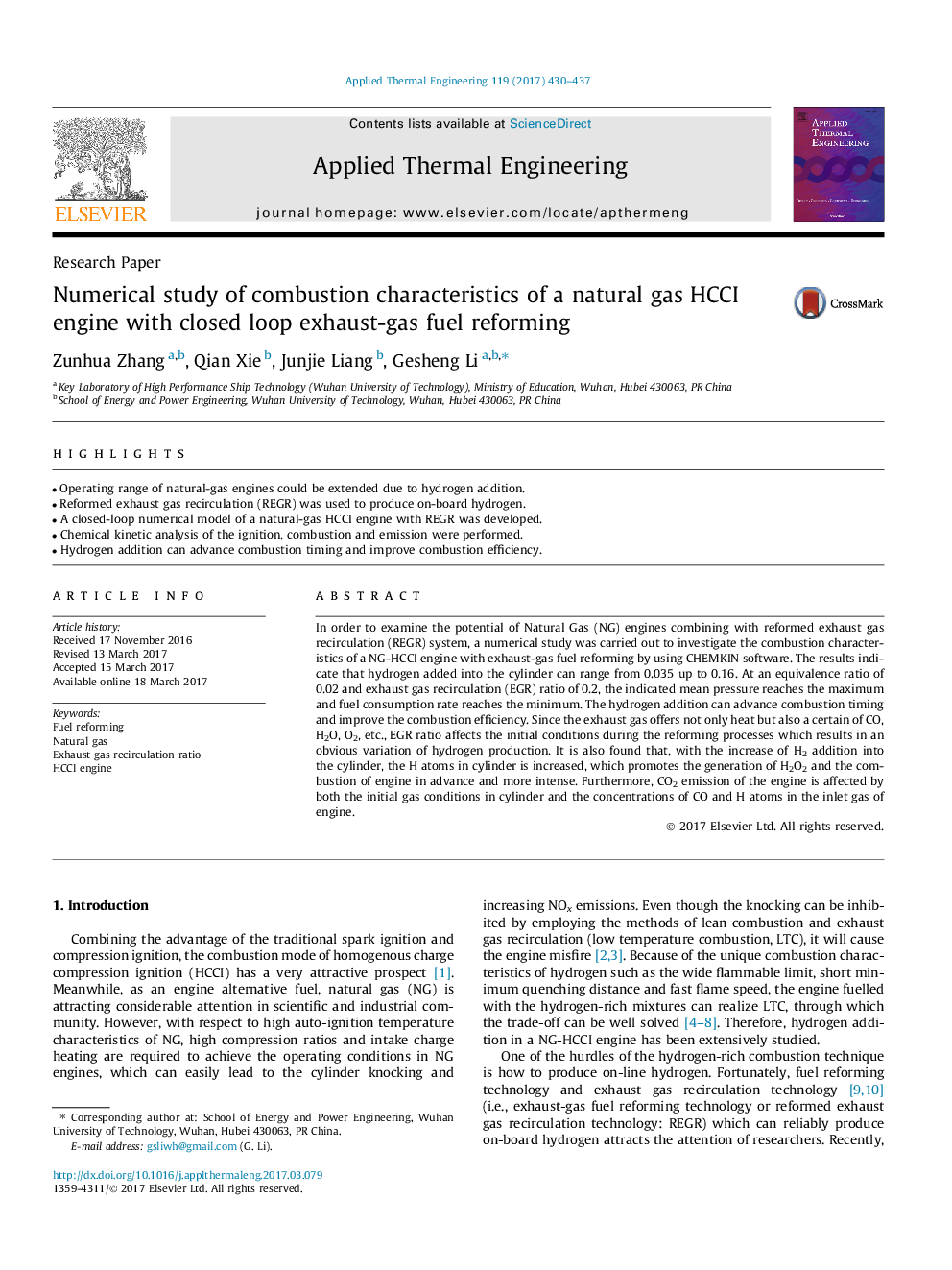| Article ID | Journal | Published Year | Pages | File Type |
|---|---|---|---|---|
| 4991304 | Applied Thermal Engineering | 2017 | 8 Pages |
Abstract
In order to examine the potential of Natural Gas (NG) engines combining with reformed exhaust gas recirculation (REGR) system, a numerical study was carried out to investigate the combustion characteristics of a NG-HCCI engine with exhaust-gas fuel reforming by using CHEMKIN software. The results indicate that hydrogen added into the cylinder can range from 0.035 up to 0.16. At an equivalence ratio of 0.02 and exhaust gas recirculation (EGR) ratio of 0.2, the indicated mean pressure reaches the maximum and fuel consumption rate reaches the minimum. The hydrogen addition can advance combustion timing and improve the combustion efficiency. Since the exhaust gas offers not only heat but also a certain of CO, H2O, O2, etc., EGR ratio affects the initial conditions during the reforming processes which results in an obvious variation of hydrogen production. It is also found that, with the increase of H2 addition into the cylinder, the H atoms in cylinder is increased, which promotes the generation of H2O2 and the combustion of engine in advance and more intense. Furthermore, CO2 emission of the engine is affected by both the initial gas conditions in cylinder and the concentrations of CO and H atoms in the inlet gas of engine.
Keywords
Related Topics
Physical Sciences and Engineering
Chemical Engineering
Fluid Flow and Transfer Processes
Authors
Zunhua Zhang, Qian Xie, Junjie Liang, Gesheng Li,
